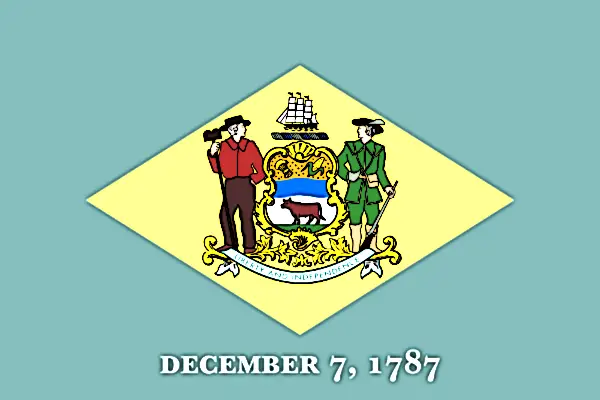Delaware Colony
Delaware Colony – History of ‘Delaware Colony’ in the Colonial Period!
Native American Occupation of the Area
The Lenape and other tribes were the original Native American Settlers in what became known as Delaware at the start of the 17th Century. After this Swedish and Dutch settlers began to take over the area followed by the British. The Dutch always purchased land rather than taking it using force – this became known as ‘Dutch Payment’.

Dutch and Swedish Power Struggle
The Delaware colony was constantly changing hands between the Dutch and Swedes during the period of 1631 and 1655 with various business interests such as the ‘Dutch West India Company’ keen to take control of the region. Eventually Britain gained control of the region in 1664. Because of this Delaware had a very diverse mix of people such as Dutch, Belgians, Germans and Swedes who had different cultures and religions.
The Delaware Colony would become known as one of the famous 13 British colonies who fought for independence against the British. The Delaware Colony was also known as one of the Middle Colonies, alongside New York, New Jersey, Pennsylvanian and New Netherlands. New Netherlands would be re-named New York after it’s Capture by British forces and was named after the ‘Duke of York’.
William Penn
When William Penn was granted the land of Pennsylvania in 1681, he took over the Delaware area from the Duke of York, and later dubbed them “The Three Lower Counties on the Delaware River”
William Penn was given the deed to what was then called “the Lower Counties on the Delaware” by the Duke of York, in a deed separate from that which he held for the larger Province of Pennsylvania.
Delaware was then governed as part of Pennsylvania from 1682 until 1701, when the Lower Counties petitioned for and were granted an independent colonial legislature, though the two colonies shared the same governor until 1776, when Delaware’s assembly voted to break all ties with both Great Britain and Pennsylvania.
Dutch, Swedish and British Control
The Dutch never accepted the Swedish colony as legitimate and the struggle between the forces of the Dutch West India Company and the officials and backers of New Sweden was on going. New Netherlands Governor Peter Stuyvesant re-captured the area from the Swedish colonialist before it fell under the Control of British Colonists.
English conquest
After the British had conquered the Dutch and taken control of ‘New Amsterdam’ re-naming it ‘New York’, Robert Carr ‘governor of the Colony of Rhodes Island’ was sent to capture the Delaware River region’. He brutally went about his task burning down Dutch settlements and taking prisoners who were then sold into slavery.
Finally the Dutch were defeated and sent packing and they had to end their claims to any of the North American land that was in the hands of other colonialists.
Delaware Colony Fast Facts
1609 – Dutch Ship ‘Halve Maen’ under ‘Henry Hudson’ makes First exploration of Delaware Valley
1609 – Unbeknown to him Hudson sails into what would later be known as Delaware Bay.
1610 – Samuel Argall discovers what he names the ‘River Delaware’ after being blown off course.
1613 – Follow up expeditions map out the area of Delaware Bay.
1614 – Cornelius Hendrickson explores and maps out the Delaware shoreline for inclusion in the ‘New Netherlands’ colony.
1629 – The Dutch West India Company send out agents Gillis Hossitt and Jacob to buy the Delaware territory of the Native Americans
1631 – Delaware becomes an early Dutch Settlement
1631- A fort is built on the first Dutch Settlement on Cape Henlopen on Lewes Creek, in the Zwaanendael Colony.
1638 – Swedish colony of ‘New Sweden’ is the first permanent European settlement in Delaware.
1643 – Governor Johan Björnsson Printz administers the colony until 1653
1664 – Britain gains control of the Delaware region led by, British commissioner Robert Carr
1664 – Sir Robert Carr took New Amstel for the Duke of York, renaming it New Castle.
1664 – The first European settlers in Delaware were the Swedes and Dutch, but the land fell under English control.
1682 – Delaware comes under the rule of Pennsylvania
1701 – William Penn agrees to a new separate colonial assembly as he struggled to control the ethnically diverse region.